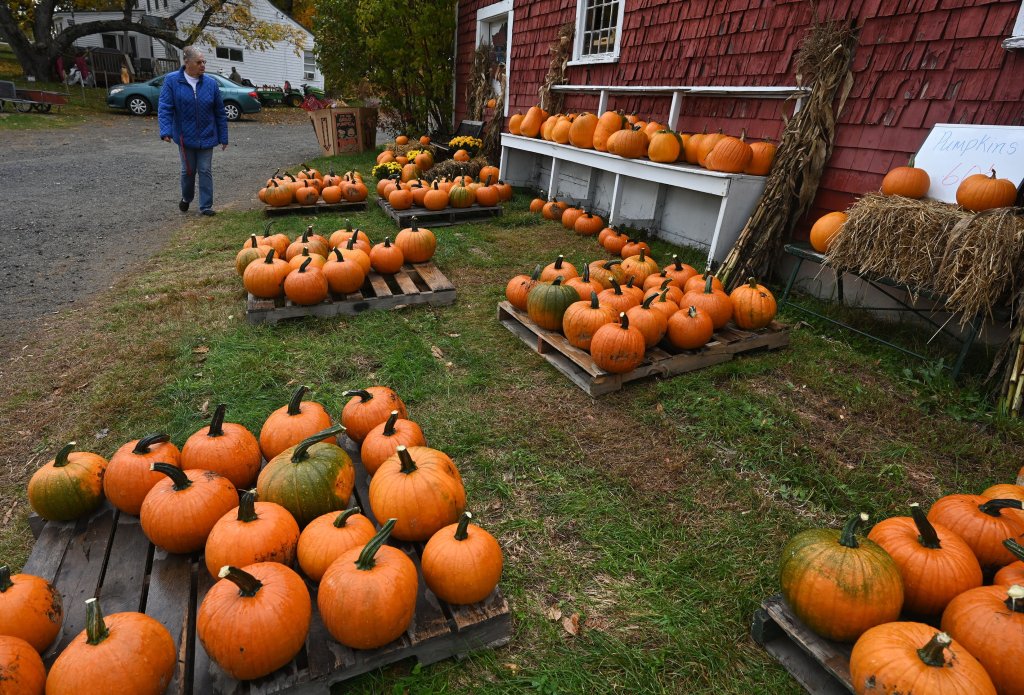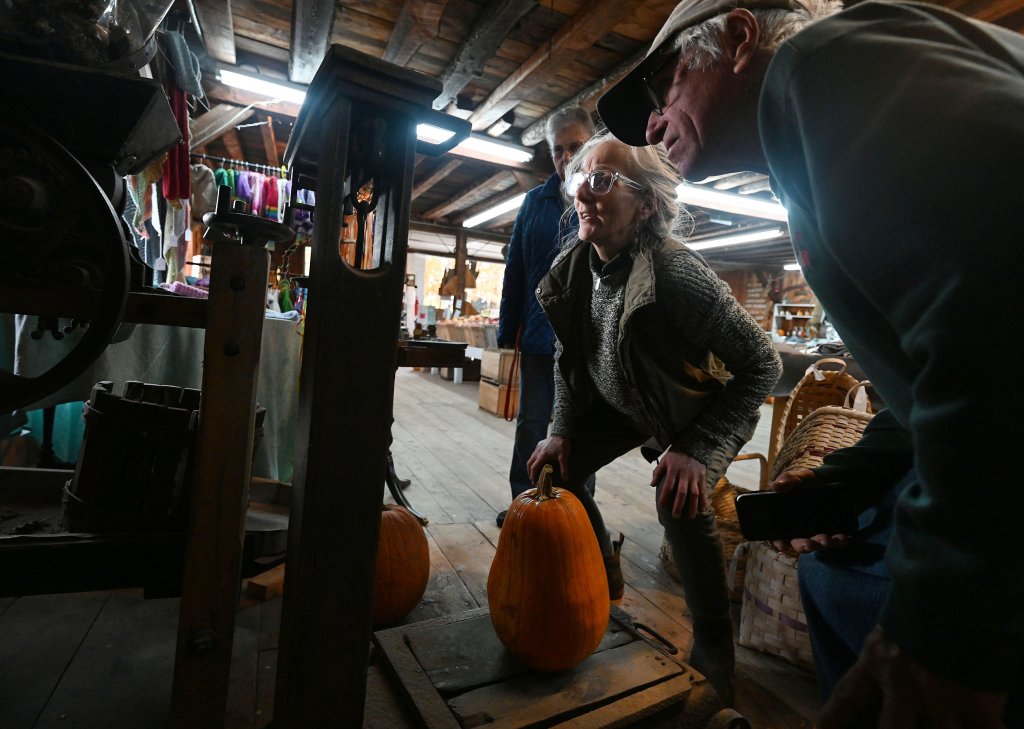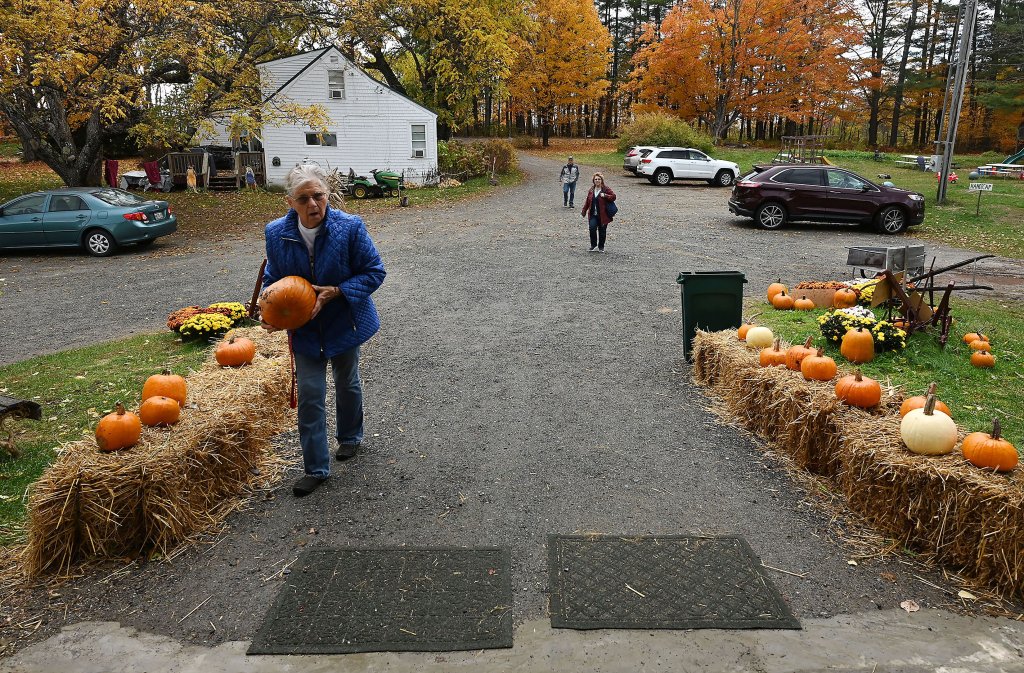
When we were kids, teenagers would snatch jack-o’-lanterns from porches on Halloween night and roll them down Madison Avenue hill in Skowhegan as if they were bowling balls.
They’d stomp on them, squash them and kick the detritus by the roadside. It was all part of the mischief we expected at Halloween, though not everybody’s idea of fun.
Riding the bus to school the morning after was like passing through a pumpkin war zone, the orange fruit tossed everywhere in various states of decay.
Nowadays, we don’t witness as many pumpkin pranks. We instead enjoy the perks of pumpkins. We bake, steam or boil them to eat outright, or use pumpkin in pies, bread and other baked goodies during the holidays.
Sunday is National Pumpkin Day, the unofficial holiday to celebrate everything pumpkin.
We carve them into jack-o’-lanterns for Halloween, slop out the seeds for drying, salting and consuming as snacks, cut off the tops and plunk a candle inside. Off to the porch they go.
We use them to decorate lawns, tables and window sills. Afterward, we toss them into fields or woods for animals to consume.

I’ve been researching online as the holiday approaches. There’s much to learn about pumpkins, which are considered a winter squash, and also a fruit, not a vegetable.
They are very nutritious — great sources of vitamins A, C and E, as well as minerals and fiber.
Illinois produces the most pumpkins in the U.S. — hundreds of millions of pounds a year.
Did you know that the word pumpkin comes from the Greek word “pepon,” which means a large melon? I didn’t.
Besides carving pumpkins, we paint them, toss them as part of pumpkin bowling contests at fall festivals and enter them in competitions for largest pumpkin.
We grow them in our own gardens or visit farms to choose them from large pumpkin patches. They come in all shapes, sizes and weights.
According to my research, pumpkins originated in the Americas, where thousands of years ago, natives relied on them for food, used them as containers and even dried them for weaving mats. Later, the colonists also reaped the benefits of pumpkins.

Jack-o’-lanterns, by the way, apparently originated in Ireland. According to myth, centuries ago a drunk named Stingy Jack repeatedly deceived the devil. Eventually the devil doomed him to wander the world with nothing but an ember in a carved, hollow turnip to light his way. People afterward carved scary faces on turnips and other root vegetables and lit them as a way to protect themselves from Stingy Jack’s wandering spirit. Then they discovered carved pumpkins made better lanterns.
For more information, the University of Maine Cooperative Extension’s website has lots of ideas for growing, harvesting, storing and using pumpkins.
Meanwhile, Happy Halloween to all you pumpkin lovers. And watch out for those goblins — especially Stingy Jack.
Amy Calder has been a Morning Sentinel reporter 37 years. Her columns appear here Sundays. She is the author of the book, “Comfort is an Old Barn,” a collection of her curated columns, published in 2023 by Islandport Press. She may be reached at [email protected]. For previous Reporting Aside columns, go to centralmaine.com.

We invite you to add your comments. We encourage a thoughtful exchange of ideas and information on this website. By joining the conversation, you are agreeing to our commenting policy and terms of use. More information is found on our FAQs. You can modify your screen name here.
Comments are managed by our staff during regular business hours Monday through Friday as well as limited hours on Saturday and Sunday. Comments held for moderation outside of those hours may take longer to approve.
Join the Conversation
Please sign into your CentralMaine.com account to participate in conversations below. If you do not have an account, you can register or subscribe. Questions? Please see our FAQs.